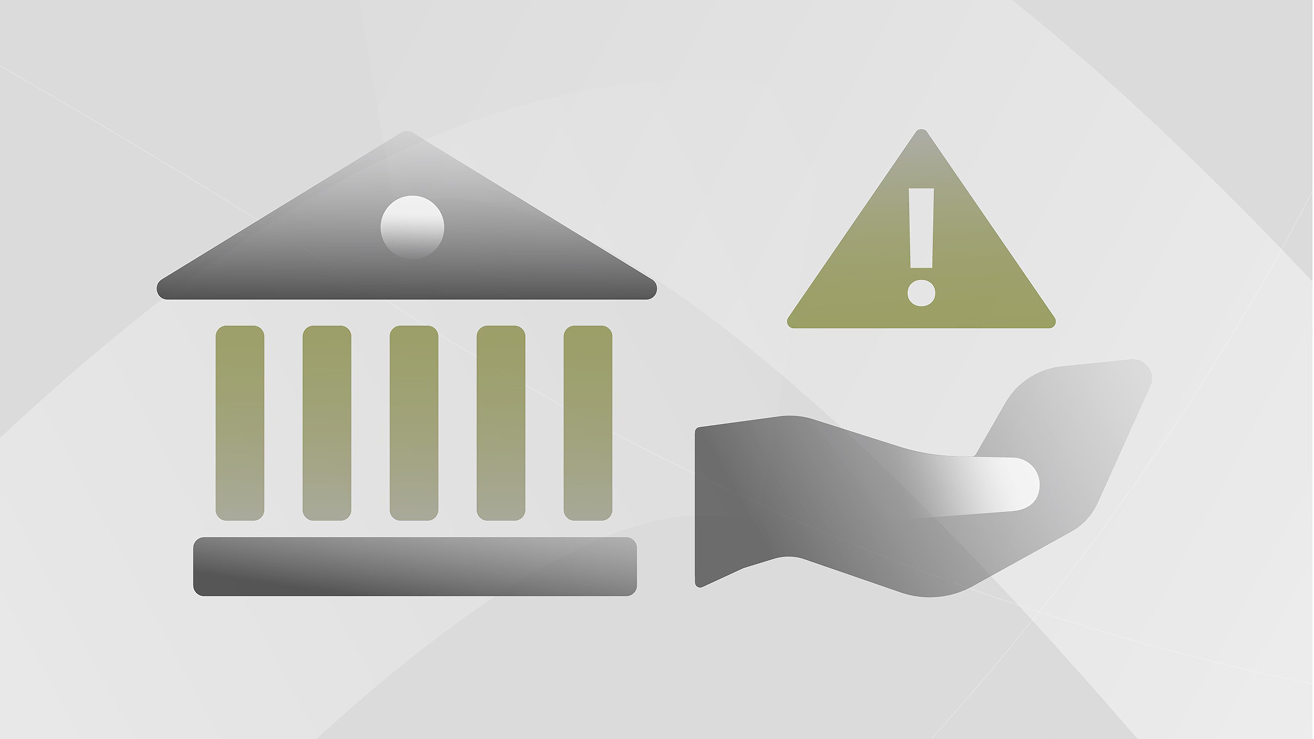
Key Takeaways
Risk management in banking is a critical discipline focused on identifying, assessing, and mitigating the various risks that banks face.
- What are the risks: These include credit risk, market risk, operational risk, and compliance risk.
- The business impact: Effective risk management is fundamental to the stability and profitability of any financial institution
- The key takeaway: Banks employ a variety of sophisticated strategies and systems to manage these complex risks.
Bank Risk Management stands as an absolute imperative in the highly regulated and interconnected world of finance. It’s the structured process by which financial institutions identify, assess, monitor, and mitigate various risks that could jeopardize their capital, earnings, or reputation. This comprehensive approach is not just about avoiding losses; it’s about ensuring stability, fostering growth, and maintaining public trust.
Effective Bank Risk Management empowers financial leaders, CIOs, and technology heads to navigate a landscape filled with unpredictable challenges. It transforms potential threats into manageable scenarios, allowing banks to operate securely and efficiently. Understanding this crucial discipline is foundational for anyone involved in the strategic direction and operational integrity of a banking institution.
The Imperative of Risk Management in Banking
The financial sector operates under constant scrutiny and faces dynamic global economic conditions. This makes the importance of risk management in the banking sector paramount. Banks handle vast sums of money, facilitate complex transactions, and are entrusted with the financial well-being of individuals and businesses. Without robust risk frameworks, instability can quickly cascade, leading to severe economic repercussions.
A well-defined risk management strategy safeguards against financial shocks, supports regulatory compliance, and protects stakeholder confidence. It’s the backbone of resilience, enabling banks to absorb unexpected losses, adapt to market shifts, and continue serving their clients effectively. Proactive Bank Risk Management builds a foundation of trust, essential for any institution seeking sustained success.
Understanding Key Risks in Banking
Banks contend with a multitude of potential threats that can impact their operations and profitability. A clear understanding of the various types of risks in banking sector is the first step towards effective mitigation. These risks are interconnected and require a holistic risk management strategy to address.
Primary categories include:
- Credit Risk: The danger of borrowers defaulting on their obligations. This affects loans, bonds, and other forms of credit.
- Market Risk: The potential for losses due to adverse movements in market prices, such as interest rates, exchange rates, or equity prices.
- Operational Risk: Losses arising from inadequate or failed internal processes, systems, people, or from external events. This encompasses fraud, system failures, or human error.
- Liquidity Risk: The inability of a bank to meet its short-term financial obligations without incurring significant losses.
- Reputational Risk: The potential for damage to a bank’s public image and credibility due to negative publicity, ethical lapses, or poor performance.
- Cybersecurity Risk: Threats from cyberattacks, data breaches, and other digital vulnerabilities that can compromise sensitive information and systems.
- Compliance Risk: The risk of legal or regulatory sanctions, financial loss, or reputational damage due to non-compliance with laws, regulations, codes of conduct, and internal policies.
Each of these types of risks in banking sector demands specialized attention and integrated risk management solutions.
The Strategic Risk Management Process
Effective Bank Risk Management isn’t a one-time task; it’s a continuous, cyclical process involving several critical stages. This structured approach ensures that risks are systematically identified, assessed, and managed. Understanding How Does the Risk Management in the Banking Process Work involves recognizing these interconnected steps.
The five key stages are:
- Risk Identification: Pinpointing actual and potential risks across all banking operations, products, and services. This involves analyzing historical data, market trends, and internal processes.
- Risk Assessment & Measurement: Evaluating the likelihood and potential impact of identified risks. This quantitative and qualitative analysis helps prioritize risks based on their severity.
- Risk Mitigation & Control: Developing and implementing strategies to reduce or eliminate identified risks. This can involve setting limits, hedging, diversifying portfolios, or implementing new policies and controls.
- Risk Monitoring: Continuously tracking and reviewing the effectiveness of risk controls and the overall risk exposure. This involves real-time data analysis and performance reporting.
- Risk Reporting: Communicating risk information to relevant stakeholders, including senior management, board members, and regulators. Transparent reporting fosters accountability and informs strategic decision-making.
This cyclical process ensures that a bank’s risk management strategy remains agile and responsive to evolving threats and opportunities.
AI and Automation as Strategic Risk Solutions
The complexity of modern Bank Risk Management demands more than traditional methods. The integration of Artificial Intelligence (AI) and automation has emerged as a game-changer, offering powerful risk management solutions that enhance efficiency, accuracy, and real-time responsiveness. These technologies are crucial for strengthening a bank’s overall risk management strategy.
AI-driven analytics can process vast datasets quickly, identifying subtle patterns and predicting potential risks with far greater precision than manual methods. For instance, AI can significantly enhance cybersecurity defenses by detecting anomalous network activity in real time. Automation, conversely, streamlines repetitive compliance tasks, reduces human error in data processing, and accelerates various risk assessment and reporting workflows. This synergy empowers banks to shift from reactive measures to a proactive, predictive approach in managing complex risks, improving credit assessment, and enabling continuous monitoring.
Transforming Bank Risk Management with Kognitos
Many financial institutions seek advanced risk management solutions but find traditional tools fall short. Kognitos offers a fundamentally different approach to Bank Risk Management, by transforming automation with natural language and AI reasoning, making enterprise-grade AI accessible to business users.
Kognitos empowers business teams to automate processes crucial for risk management using plain English. This bridges the gap between IT and risk/compliance operations, allowing for greater agility and control. Our platform leverages a neurosymbolic AI architecture that ensures precision and eliminates AI hallucinations, providing robust AI governance and control essential for mitigating operational and compliance risks. This positions Kognitos as a key tool that helps banks in addressing various risks effectively.
Kognitos and its Differentiated Risk Management Solutions:
- Unified Operational Control: Kognitos provides a single platform to automate diverse back-office processes, including those critical for risk management. This consolidates data and operations, reducing the complexity of managing disparate risk management solutions.
- Enhanced Data Integrity and Compliance: Our platform supports structured data from core banking systems and unstructured data from emails, documents, and communications. This comprehensive data handling, combined with AI reasoning, ensures accurate data for risk assessment and facilitates automated compliance checks, strengthening a bank’s risk management strategy.
- Intelligent Exception Handling for Operational Risk: Kognitos’ AI-driven Guidance Center learns from human interventions during exceptions. This patented Process Refinement Engine continually updates automated processes, reducing human error and improving resilience against operational risks by incorporating learned best practices.
- English as Code for Auditability: Defining workflows in natural language creates a dynamic system of record with full auditability and explainability. This clarity is invaluable for compliance, internal audits, and external regulatory reporting, providing transparent risk management solutions that build trust and confidence.
- Accelerated Risk Monitoring and Reporting: By automating data extraction and analysis from various sources, Kognitos enables real-time insights into risk exposures. This capability significantly streamlines the monitoring and reporting stages of Bank Risk Management, allowing for quicker response to emerging threats.
Kognitos innovations, like hundreds of pre-built workflows for finance and legal and built-in document and Excel processing, mean that common risk-prone processes, such as contract review or regulatory reporting, can be automated with inherent accuracy and traceability. Automatic agent regression testing ensures that as regulatory environments change, automations can adapt confidently, supporting a robust and evolving risk management strategy.
Real World Applications in Banking Risk
The application of advanced automation and AI through platforms like Kognitos provides tangible benefits for Bank Risk Management. These practical scenarios demonstrate how financial institutions can deploy innovative risk management solutions.
Consider these real-world examples:
- Automated AML/KYC Processes: Banks can leverage AI to process vast amounts of customer data, identifying suspicious transaction patterns or non-compliant customer information far more efficiently than manual reviews. This significantly strengthens defenses against financial crime.
- Enhanced Credit Risk Assessment: AI algorithms can analyze diverse data points (beyond traditional credit scores) to provide more accurate and dynamic credit risk profiles for borrowers, leading to better lending decisions and reduced default rates.
- Real-time Fraud Detection: Automation combined with AI enables banks to monitor transactions in real time, detecting and flagging fraudulent activities instantly. This minimizes financial losses and protects customer accounts.
- Streamlined Regulatory Reporting: Automating the collection, validation, and submission of data for regulatory reports (e.g., Basel, Dodd-Frank) reduces compliance risk and ensures timely, accurate filings. Kognitos excels in this area, offering powerful risk management solutions.
- Operational Resilience through Process Refinement: By continuously learning from operational exceptions, Kognitos’ platform improves process robustness. This directly mitigates operational risks associated with human error or process breakdowns.
These applications underscore how a sophisticated risk management strategy powered by AI and automation transforms the banking sector’s ability to identify, mitigate, and monitor risks effectively.
Strengthening Your Bank’s Risk Framework
To develop a truly robust risk management strategy, banks must embrace continuous innovation and a holistic view of their operational landscape. The dynamic nature of the financial industry necessitates ongoing adaptation and technological adoption.
Key ways to strengthen your Bank Risk Management framework include:
- Embrace Integrated Platforms: Move away from siloed tools towards unified platforms that provide comprehensive visibility and control over all risk domains.
- Invest in AI and Automation: Leverage advanced AI and automation for predictive analytics, real-time monitoring, and efficient risk mitigation. These are critical risk management solutions.
- Foster a Risk-Aware Culture: Ensure that risk management is embedded in every level of the organization, with clear policies, training, and accountability.
- Prioritize Data Governance: Implement strong data management strategies to ensure data accuracy, security, and accessibility, which are foundational for effective risk assessment and reporting.
- Regularly Review and Adapt: Continuously assess the effectiveness of your existing risk management strategy and adapt it in response to new threats, technological advancements, and regulatory changes.
By focusing on these areas, banks can build a resilient and forward-looking Bank Risk Management posture.
The Future Landscape of Banking Risk
The future of Bank Risk Management is inextricably linked to advanced technological adoption. As regulatory environments become more complex and cyber threats more sophisticated, banks must move beyond traditional compliance checkboxes to truly intelligent, adaptive risk frameworks. The importance of risk management in the banking sector will only amplify.
Kognitos is uniquely positioned to drive this transformation. By empowering institutions with natural language AI for automation, we provide truly innovative risk management solutions that enhance visibility, streamline compliance, and build inherent resilience. For financial leaders, understanding Bank Risk Management is no longer just about compliance; it’s about leveraging AI and automation to secure a competitive edge and build enduring trust in an unpredictable world.
Discover the Power of Kognitos
Our clients achieved:
- 97%reduction in manual labor cost
- 10xfaster speed to value
- 99%reduction in human error
Risk management in the banking sector is the systematic process employed by financial institutions to identify, measure, monitor, and control various types of risks that could negatively impact their financial stability, operational efficiency, or reputation. Its core aim is to safeguard capital, ensure compliance, and support sustainable growth.
The 5 stages of risk management in the banking sector typically include:
- Identification: Recognizing potential risks.
- Assessment: Evaluating the likelihood and impact of identified risks.
- Mitigation: Developing strategies to reduce or control risks.
- Monitoring: Continuously tracking risks and the effectiveness of controls.
- Reporting: Communicating risk information to stakeholders.
This forms a cyclical risk management strategy.
The main types of risks in banking sector include:
- Credit Risk: Borrower default.
- Market Risk: Losses from market price fluctuations.
- Operational Risk: Losses from failed internal processes, systems, or people.
- Liquidity Risk: Inability to meet short-term obligations.
- Reputational Risk: Damage to public image.
- Cybersecurity Risk: Threats from digital attacks.
Compliance Risk: Penalties from regulatory non-adherence.
Risk management in the banking sector works through a continuous cycle: first, risks are identified across all operations. Next, they are assessed for likelihood and impact. Then, mitigation strategies are put in place. These risks and controls are constantly monitored for effectiveness, and finally, comprehensive reports are generated for internal and external stakeholders, informing ongoing strategic adjustments. This cyclical process defines a bank’s risk management strategy.
Ways to strengthen your risk management strategy include: embracing integrated technological platforms, significantly investing in AI and automation for predictive analysis and efficient mitigation, fostering a robust risk-aware culture throughout the organization, prioritizing stringent data governance practices, and consistently reviewing and adapting your risk framework in response to evolving threats and regulatory landscapes. These constitute effective risk management solutions.








